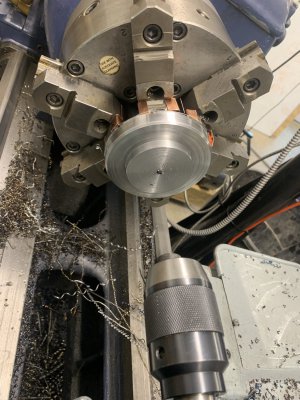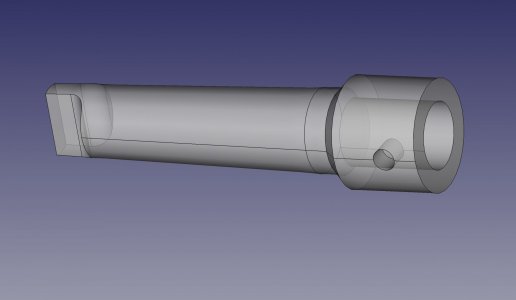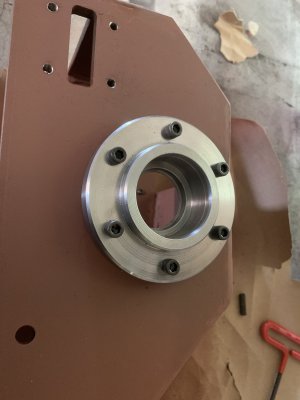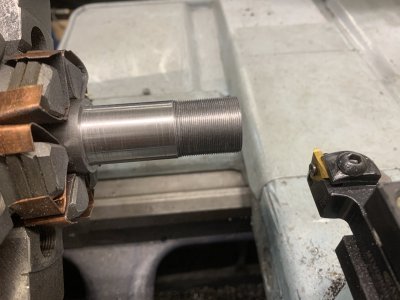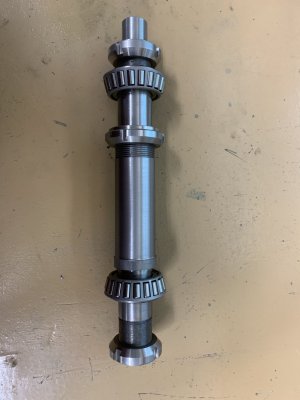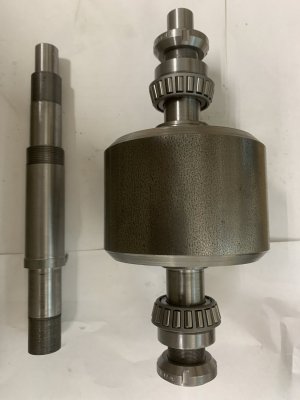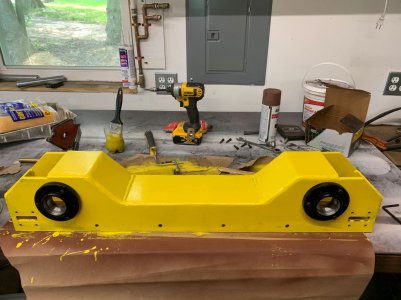That's a pretty nice looking mill...What mill is that?
Dan, it is a Grizzly G0757z. It has a 2 speed 3HP rated TENV vertical spindle with a factory VFD. (By amperage it is closer to 2 HP). It also has a 2hp rated single phase motor and a horizontal spindle and the table rotates in the x-y plane.
I’ve used the horizontal spindle maybe twice in the 5 years I’ve had it. I’d spend the money on a bigger table, this one has about 24” of x travel and I could use another 6 inches. The vertical head tilts but no nod, which I have missed on several occasions.
I’d like to add a power drawbar, one shot oiler, and z axis power feed. But those are all wishlist things that may never get done. If I go that far I’ll pull it apart, scrape true, and repaint it too.
I bought this mill, and a Grizzly G0752Z 10x22 lathe as I was approaching retirement, having decided to just dive into machining as a retirement hobby. Had never run a mill or metal lathe before that. I've since sold that lathe to another HM'er, after getting the Monarch 12"CK up and running. Needed the space, as that was before building the new shop. I haven't completely replaced the sold lathe as the 1944 12"CK (14x30 swing) doesn't spin up beyond 1000rpm so it can be a bit slow for making smaller parts, nor will it do metric. I have a 10EE lathe that got sidetracked by the new building that should fill the small end gap, and at some point an ELS would allow metric. The monster lathe (Monarch 612, 25"x50") spins up to 1500 rpm so that gets me higher speeds, but feels like using a sledgehammer to drive tacks using it for small work. And it needs a DRO.
